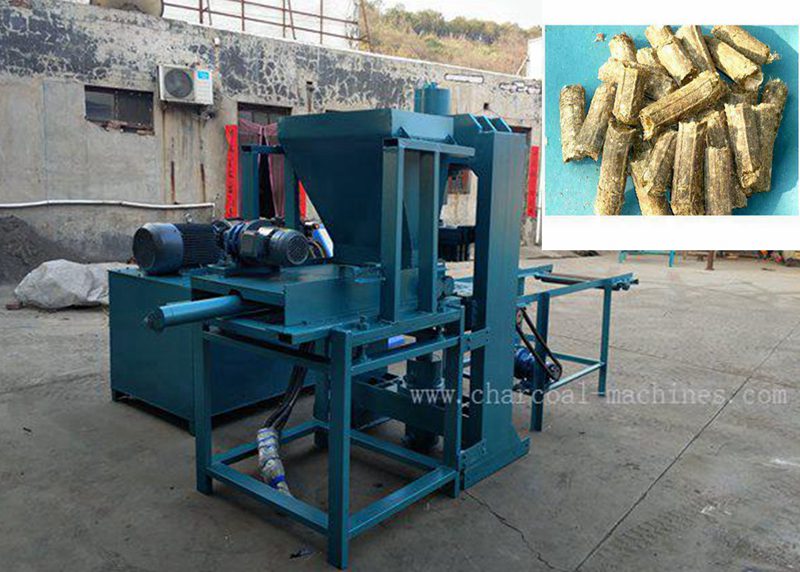Funktionsprinzip
Die Stroh-Kohlebrikettiermaschine besteht hauptsächlich aus einem Zuförderer, einem Kompressor und einer Auswurfmaschine. Der Kompressor besteht aus einem Rahmen, einem Elektromotor, einem Einlass, einem Getriebe, einer Strukturrolle einer Strohbrikettiermaschine, einer Ringdüse, einem elektrischen Heizring und einem Auslass.
Das Arbeitsprinzip der Stroh-Kohlebrikettiermaschine ist wie folgt: Das zu pressende Stroh oder Futtergras wird geschnitten oder verdreht, die Länge beträgt weniger als 50 mm, der Wassergehalt wird im Bereich von 10 bis 25 % gehalten, und das Material wird über den Zuförderer in den Einlass eingebracht. Die Mündung dreht sich über die Hauptwelle, um die Druckrolle anzutreiben, und nach der Drehung der Druckrolle wird das Material mit Gewalt aus dem Düsenloch extrudiert und fällt aus dem Auslass. Nach dem Abkühlen darf der Feuchtigkeitsgehalt 14 % nicht überschreiten, und die Ware wird verpackt.

Strukturelle Merkmale
Die Kompressionsform der Stroh-Kohlebrikettiermaschine ist eine flache Ringdüse mit folgenden strukturellen Merkmalen: Erstens treibt der Motor das Reduziergetriebe an, um die Spindel anzutreiben, und treibt dann die Druckrolle über die Hauptwelle an, die Struktur ist einfach und die Wartung ist bequem; zweitens ist die Druckrolle und die Düse Der radiale Spalt ist bequem einzustellen, was den am besten geeigneten Spalt zwischen den beiden Druckrollen und der Düse gewährleisten kann; drittens werden obere und untere elektrische Heizringe hinzugefügt, die die Ringdüse erwärmen können, was für die Materialbildung vorteilhaft ist.
Produktionsprozess
Das Material, das 60 mm überschreitet, wird von einer Rake-Maschine geschnitten oder von einem Zerkleinerer pulverisiert, und die Materialkornlänge sowie der Wassergehalt liegen im festgelegten Bereich; das Material wird gleichmäßig von der Zuführmaschine (Gurtförderer) oder manuell in die Formmaschine geleitet. Durch Pressen wird das Endprodukt hergestellt. Vom Rohmaterial bis zur Brennstoffnutzung verläuft der Prozess wie folgt: Materialrückgewinnung → Schneiden → automatische Metallentfernung → Pressen → Formen → Ausgabe → Abkühlung → Transport → Biomassekraftwerk oder kleiner Kessel oder zivil.
